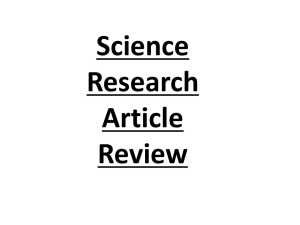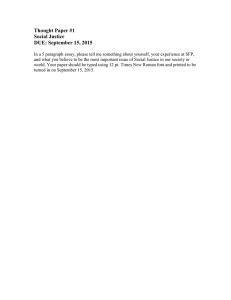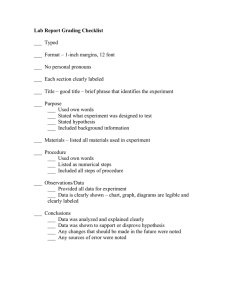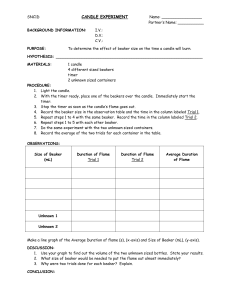apes – formal lab report format
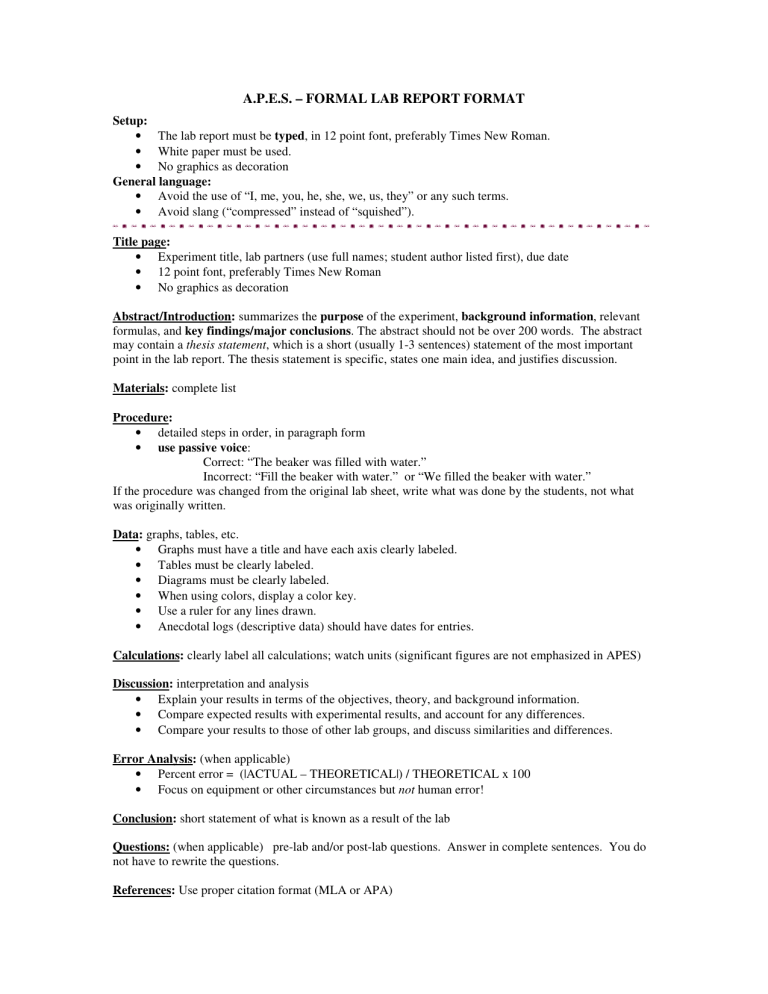
A.P.E.S. – FORMAL LAB REPORT FORMAT
Setup:
•
The lab report must be typed , in 12 point font, preferably Times New Roman.
• White paper must be used.
• No graphics as decoration
General language:
•
Avoid the use of “I, me, you, he, she, we, us, they” or any such terms.
• Avoid slang (“compressed” instead of “squished”).
Title page:
• Experiment title, lab partners (use full names; student author listed first), due date
• 12 point font, preferably Times New Roman
•
No graphics as decoration
Abstract/Introduction: summarizes the purpose of the experiment, background information , relevant formulas, and key findings/major conclusions . The abstract should not be over 200 words. The abstract may contain a thesis statement , which is a short (usually 1-3 sentences) statement of the most important point in the lab report. The thesis statement is specific, states one main idea, and justifies discussion.
Materials: complete list
Procedure:
• detailed steps in order, in paragraph form
• use passive voice :
Correct: “The beaker was filled with water.”
Incorrect: “Fill the beaker with water.” or “We filled the beaker with water.”
If the procedure was changed from the original lab sheet, write what was done by the students, not what was originally written.
Data: graphs, tables, etc.
• Graphs must have a title and have each axis clearly labeled.
•
Tables must be clearly labeled.
• Diagrams must be clearly labeled.
• When using colors, display a color key.
•
Use a ruler for any lines drawn.
• Anecdotal logs (descriptive data) should have dates for entries.
Calculations: clearly label all calculations; watch units (significant figures are not emphasized in APES)
Discussion: interpretation and analysis
• Explain your results in terms of the objectives, theory, and background information.
•
Compare expected results with experimental results, and account for any differences.
• Compare your results to those of other lab groups, and discuss similarities and differences.
Error Analysis: (when applicable)
•
Percent error = (|ACTUAL – THEORETICAL|) / THEORETICAL x 100
• Focus on equipment or other circumstances but not human error!
Conclusion: short statement of what is known as a result of the lab
Questions: (when applicable) pre-lab and/or post-lab questions. Answer in complete sentences. You do not have to rewrite the questions.
References: Use proper citation format (MLA or APA)

